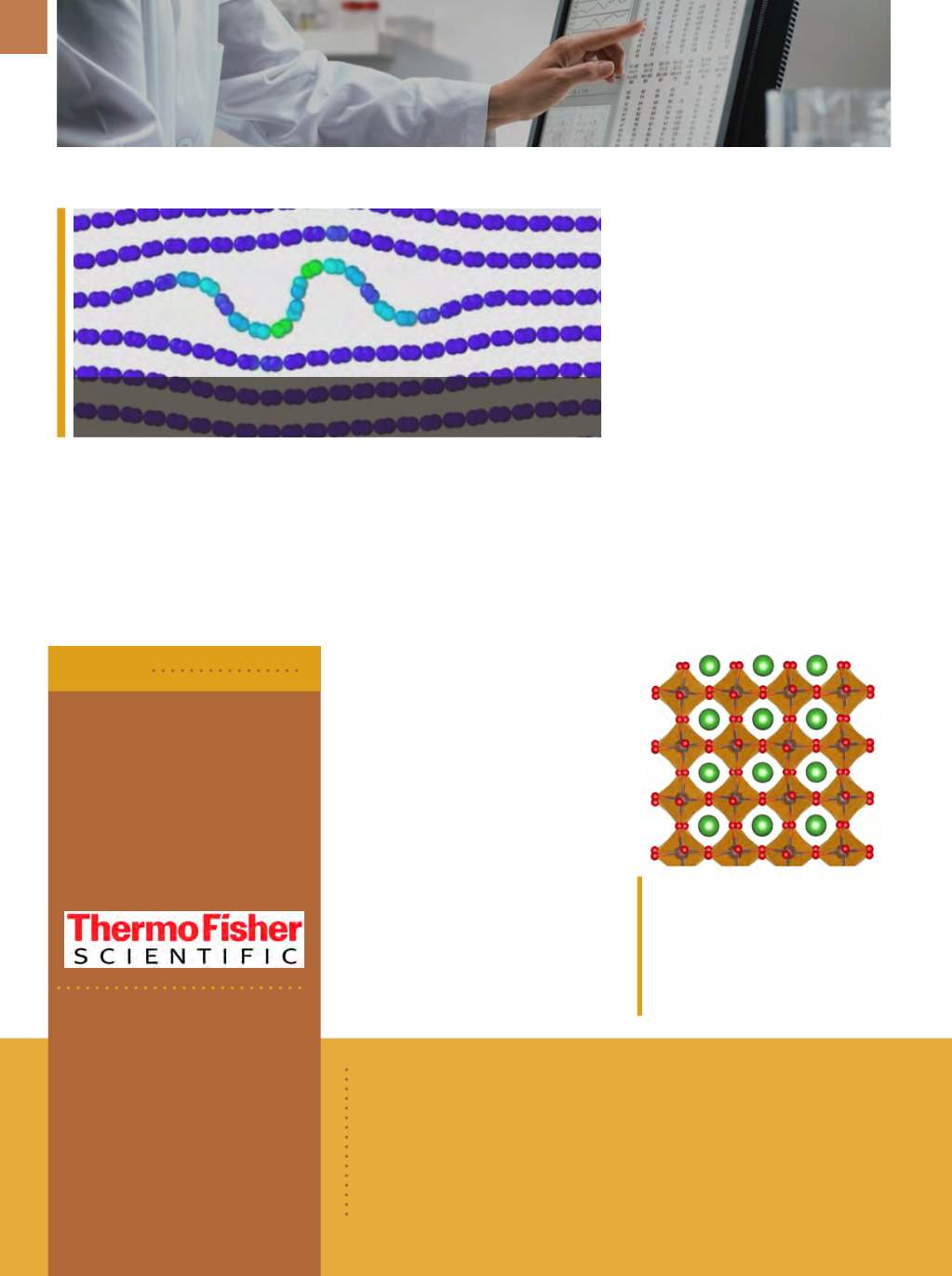

A D V A N C E D M A T E R I A L S & P R O C E S S E S | N O V E M B E R / D E C E M B E R 2 0 1 6
1 0
behavior of most layered materials,
from a sliver of graphite to geologic
formations.
drexel.edu.
MATERIAL INTERFACES GET A
CLOSE LOOK
Together with an international
team, physicists at Würzburg University,
Germany, demonstrated a new method
to analyze transition-metal oxide inter-
faces and to model their properties.
Studying the charge characteristics of
these interfaces has typically been chal-
lenging due to their varied behaviors
and the scale over which their proper-
ties change, often just a few atomic
spacings. The new approach uses anal-
ysis software based on resonant x-ray
reflectometry, which exploits x-ray light
created at a synchrotron, with atomic-
scale resolution of less than one.
LAYERED MATERIALS BUCKLE
UNDER PRESSURE
Researchers at Drexel University,
Philadelphia, observed a new type of
structural deformation mechanism in
bulk materials called
ripplocation
—the
rippling and buckling of interior atomic
layers when thematerial is compressed.
Thermo Fisher Scientific Inc.,
Waltham, Mass., completed its
acquisition of
FEI Company Inc.,
Hillsboro, Ore., for approximately
$4.2 billion following receipt of all
required regulatory approvals.
The business will become part
of Thermo Fisher’s analytical
instruments segment.
corporate.thermofisher.com.
A new specification for 3D-printed
stainless steel alloys will soon be
published by
ASTM International,
West Conshohocken, Pa., for parts
made of 316L (UNS 31603) stainless
steel.
Specification for Additive Man-
ufacturing Stainless Steel Alloy (UNS
S31603) with Powder Bed Fusion—
F3184M
—describes chemical
and mechanical requirements,
among others.
astm.org.
BRIEFS
The Science and Technology Center on Real-Time Functional Imaging, a
collaboration between scientists from
University of California
(Los An-
geles and Berkeley) and the
University of Colorado Boulder,
will receive
$24 million from the
National Science Foundation
over a five-year pe-
riod, with the possibility of an additional five-year extension. The center
will focus on advancing real-time imaging by combining and improving
single imaging methods such as optical, x-ray, nano-probe, and electron
microscopy.
ucla.edu, berkeley.edu, colorado.edu.
When a material is compressed, ripplocation occurs as the atomic layers inside
ripple and buckle. Courtesy of Drexel University.
This evidence supplants the previously
held dislocation theory of deforma-
tion in these materials, which says that
when the planes of layered solid mate-
rials are loaded and unloaded edge-on
they will either bounce back to their
original form—in an elasticmaterial—or
be permanently indented. In contrast,
ripplocation describes the material
returning to its original formwhile dissi-
pating considerable amounts of energy.
The team ran atomistic simula-
tions on a bulk sample of graphite. By
constraining the edges of the sample
while compressing the material, they
observed the nucleation and motion
of a multitude of ripplocations that
self-assembled into kink boundar-
ies. Then researchers examined sam-
ples of a layered ceramic known as a
MAX phase, in which the layers were
loaded with a spherical indenter.
High-resolution
transmission
elec-
tron microscope images of the defects
show they were not dislocations but
were consistent with ripplocation.
The finding sheds new light on the
TESTING | CHARACTERIZATION
Film of lanthanum cobalt oxide shows
a sequence of positively and negatively
charged atomic layers. Without electronic
reconstruction, an enormous electrostat-
ic field would formbetween the layers.
Courtesy of J.E. Hamann-Borrero and
Vladimir Hinkov.


















